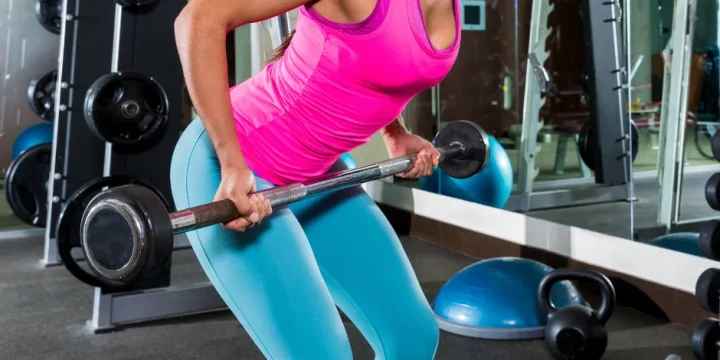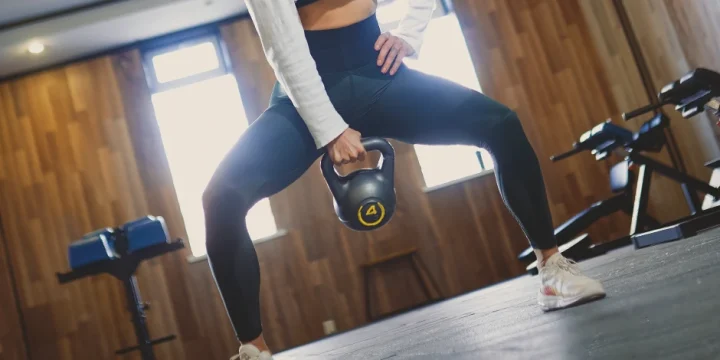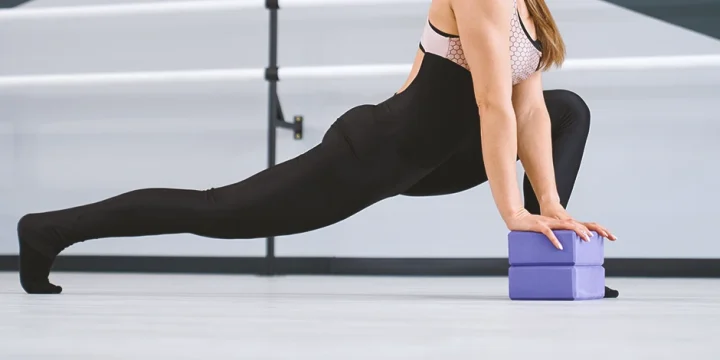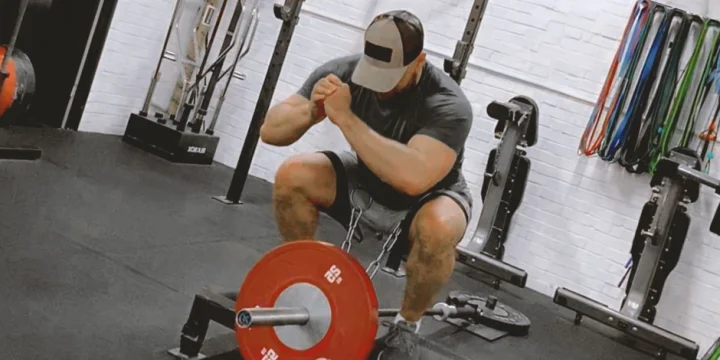As a fitness trainer with over a decade of experience, I've never met a weak person with a strong back.
Recently, after some rigorous research and observation of various exercises, I decided to compile a list of the best back extension alternatives to help out my readers and fitness clients.
These exercises work the same muscles as back extensions and have additional benefits like improved balance, increased explosiveness, and total body endurance.
In this article, we’ll break down each exercise and provide step-by-step instructions to help you incorporate them into your workout routine.
Let’s get started!
Quick Summary
- Barbell good mornings, Romanian deadlifts, and kettlebell swings are some of the best back extension alternatives.
- A back extension alternative should provide a different form of resistance or activation, be adaptable to different fitness levels, and be safe and effective.
- According to research from Biology of Sport, performing back extension exercises can strengthen the lower back muscles, enhancing overall spinal stability and reducing the risk of injury.
- Back extension alternative exercises can improve explosive power, endurance, and total body strength and target the lower back muscles.
What Makes a Good Back Extension Alternative?
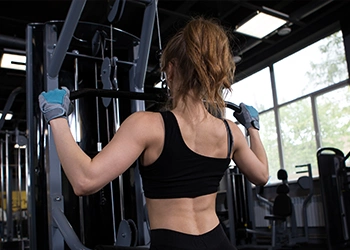
Any exercise that targets the same muscles as back extensions while providing a different form of resistance or activation makes a good back extension alternative.
They should be safe, effective, adaptable to different fitness levels, and easy to perform anywhere with or without equipment.
In addition to adding back extension alternatives to your workout routine, proper supplementation can also play a vital role in strengthening your lower back muscles. We highly recommend adding a high-quality protein powder to your diet.
Let’s dive into my picks.
8 Safe and Effective Alternatives
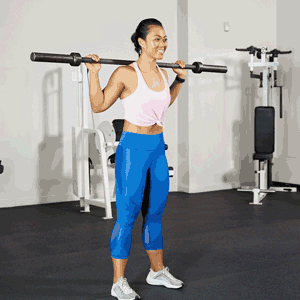
By combining my knowledge of exercise science with practical experience, I was able to curate a list of the top eight safe and effective alternatives that are unique in their approach to strengthening the lower back muscles.
1. Barbell Good Mornings
Barbell good mornings are a compound exercise that can help to develop the lower back and hamstrings.
What’s interesting about this exercise is that it requires a high level of core stability and control to perform correctly.
To perform the exercise:
- Begin by placing a loaded barbell across your shoulders, standing with your feet shoulder-width apart.
- Keep your core engaged and maintain a neutral spine as you lean forward at the hips, lowering your torso until it is parallel to the ground.
- Hold this position momentarily, then contract your lower back and hamstrings.
- Repeat for your desired number of repetitions, using
2. Sumo Deadlifts
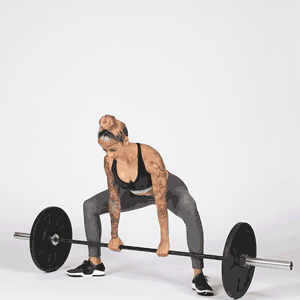
Sumo deadlifts are a compound exercise that works the lower body with a unique wide stance that places more emphasis on the inner thighs and allows for a more upright torso position.
Here's how to perform sumo deadlifts:
- Position your feet wider than your shoulders with your toes turned slightly outward.
- Grip the barbell inside your legs, keep your core engaged, back straight, and chest up.
- Lift the barbell by driving through your heels and extending your hips and knees.
- Slowly lower the barbell as you hinge at your hips and bend forward.
- Repeat for desired reps.
 3. Machine Reverse Hyperextensions
3. Machine Reverse Hyperextensions
Machine reverse hyperextensions are an isolation exercise that targets the lower back muscles, specifically the erector spinae muscles.
When using a reverse hyperextension machine to perform it, this exercise is a great way to build strength in your back and can also help to improve your posture.
Here's how to perform machine reverse hyperextensions:
- Lie face down on the back extension machine, with your hips at the edge of the pad and your legs extended.
- Hold the handles and lift your legs up and back while squeezing your glutes.
- Pause briefly before lowering your legs down.
- Repeat for desired reps with controlled movements, avoiding jerking motions.
4. Barbell Romanian Deadlifts
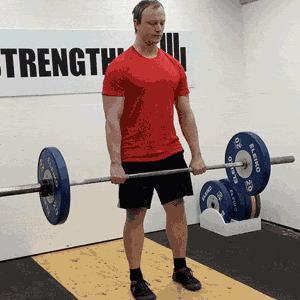
Barbell Romanian deadlift is a prone extension exercise that works the posterior chain muscles, including the hamstrings, glutes, and lower back.
This exercise places less stress on the lower back than traditional deadlifts, making it a great alternative for those with lower back issues.
To perform the barbell Romanian deadlift:
- Stand with a barbell in front of you, bend your knees slightly, and keep a flat back.
- Hinge at your hips to lower the bar towards the ground, keeping it close to your body.
- Pause when you feel a stretch in your hamstrings, then use your hamstrings and glutes to lift the bar back up to the standing position.
- Repeat the exercise for your desired number of reps.
 5. Bird Dogs
5. Bird Dogs
The bird dog is a convenient bodyweight exercise that can be performed anywhere and anytime.
It directly focuses on strengthening the erector spinae muscles, which helps fortify the lower back and is a potential treatment for lower back pain [1].
“The bird dogs engage all the important muscles needed to improve spine stability”
- Eric L’Italien, Physical Therapist
Here's how to perform it:
- Stand with hands and knees on the ground, then straighten your right arm and left leg.
- Hold for a few seconds, engage your core, and then switch to the left arm and right leg.
- Repeat for desired reps, focusing on form and avoiding any wobbling.
6. Barbell Squats
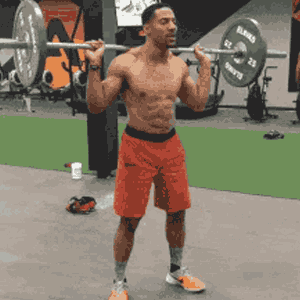
While you may initially think of squats as solely a leg exercise, a significant part of the exercise’s success is attributed to the strength of the erector spinae.
As such, the squat can serve as a suitable extension replacement, as it also engages and strengthens the lower back muscles.
Here’s how to perform the barbell squat:
- Start with feet shoulder-width apart, barbell resting on traps.
- Squat down by bending your knees and pushing your hips back.
- Lower until thighs parallel to the ground, careful not to extend knees over toes.
- Pause, then use your leg muscles to stand up to starting position.
- Repeat for desired reps.
 7. Kettlebell Swings
7. Kettlebell Swings
Kettlebell swings work similar muscles as the back extension but with two unique benefits.
Firstly, the exercise’s explosive nature helps build power in movements for sports and big lifts. Secondly, kettlebell swings burn belly fats and provide a total body endurance workout that engages stabilizer muscles from the ground up.
To perform kettlebell swings:
- Begin by standing with your feet shoulder-width apart and the kettlebell on the ground before you.
- Hinge at your hips and bend your knees to grab the kettlebell with both hands, keeping your back in a straight line.
- Swing the kettlebell back between your legs, then use your glutes and hamstrings to swing it forward and up to shoulder height.
- Allow the kettlebell to swing back between your legs, and repeat for your desired reps.
8. Superman Exercise
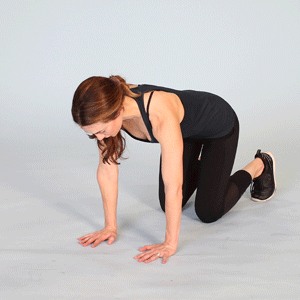
When you perform the superman exercise, you lift your arms, legs, and chest off the ground, resembling the flying position of Superman.
The bodyweight back exercise requires you to engage your lower back, glutes, and hamstrings muscles to maintain the lifted position, much like how Superman uses his strength to overcome physical challenges.
Here's how to perform the superman exercise:
- Lie face down on a mat or stability ball with your arms extended straight before you.
- Lift your arms, legs, and chest off the ground, bringing your hips forward and squeezing your glutes to maintain the lift.
- Hold the lifted position for a few seconds, then slowly lower your limbs and torso to the starting position.
- Repeat for desired reps, hold a light weight in your outstretched hands, or increase the duration of the hold to make it more challenging.
“The Superman exercise is designed to strengthen and improve stabilization of your lumbar and hip extensors,”
- Dr. Hass, Sports Physical Therapist
Benefits
Back extensions offer a range of benefits for individuals seeking to improve their physical fitness.
According to research from Biology of Sport, performing back extension exercises can strengthen the lower back muscles, enhancing overall spinal stability and reducing the risk of injury [2].
Another research study we found in PubMed showed that back exercises can improve posture, increase flexibility, and build core strength [3].
With regular practice, back extensions can lead to a healthier, more functional back that’s better equipped to handle the demands of daily life and physical activity.
Muscles Worked

The muscles worked in back extension alternatives include:
- Erector spinae: A group of three muscles that run vertically along the spine and help to extend the back.
- Gluteus maximus: The largest muscle in the buttocks, which aids in hip extension and contributes to the movement of the back.
- Hamstrings: A group of three muscles that run along the back of the thigh and help to extend the hip and bend the knee.
- Trapezius: A large muscle that spans the back of the neck, shoulders, and upper back, which helps to elevate and depress the scapula.
- Rhomboids: A pair of muscles in the upper back that helps to retract the shoulder blades.
- Latissimus dorsi: A large muscle that spans the lower back and contributes to the spine and shoulder joint extension and rotation.
Common Mistakes to Avoid
When it comes to back extension alternatives, people often make a few common mistakes.
By avoiding these mistakes, you can maximize the effectiveness of your workout.
Avoid hyperextending your back and use proper form during back extension alternative workouts to prevent injury and maximize effectiveness.
Maintain a neutral spine and engage your core.
Don’t lift too high or use momentum to swing your body. Gradually increase the difficulty of your workout, but push yourself slowly.
Remember to listen to your body and take breaks as needed.
Mastering the Art of Progression and Regression in Back Extension Alternatives
I've always made sure my clients understand how to effectively progress or regress exercises, which is key to continuous improvement and injury prevention.
This is particularly true for back extension alternatives, which target the crucial muscles of the lower back.
Here, we'll explore strategies to modify these exercises to match your fitness level, ensuring a safe and effective workout.
Progression Strategies
These four progression strategies can help you make the most of your back workout and overcome plateaus:
- Adding weights: For exercises like Romanian deadlifts or good mornings, gradually increase the weight to intensify the workout. Start with a comfortable weight and incrementally add more as you build strength and confidence.
- Increasing repetitions and sets: Begin with a lower number of repetitions and sets, and as you gain strength, increase them. This gradual increase helps your muscles adapt without overstraining.
- Altering tempo: Slowing down the eccentric (lowering) phase of exercises like hip thrusts or bird dogs can significantly increase muscle engagement and growth. A 3–4 second lowering phase is a great way to progress.
- Advanced variations: Once you're comfortable with the basic form, try advanced variations. For instance, move from a standard bird dog to a bird dog with resistance bands for added difficulty.
Regression Strategies
Here are four regression strategies I found to be helpful:
- Reducing load: If an exercise feels too challenging, reduce the weight or use body weight only. For instance, perform hip thrusts without additional weights until you build sufficient strength.
- Decreasing range of motion: Limit the range of motion to a comfortable level. For example, in a Romanian deadlift, only lower the bar to the knees instead of going further down.
- Shortening lever length: Shorten the lever length to make exercises less challenging. In a bird dog, instead of extending the opposite arm and leg fully, try bending the knee or elbow slightly.
- Isometric holds: Replace dynamic movements with isometric holds. For instance, hold the top position of a hip thrust for several seconds to build strength and stability.
FAQs
Can You Do a Back Extension Without an Extension Machine?
Yes, you can do a back extension without a back extension machine. Use your body’s weight, resistance bands, or dumbbells for added resistance.
Are Back Extensions Necessary?
Back extensions are not necessary, but they can be useful for strengthening the lower back muscles and improving posture.
Why Do Weightlifters Do Back Extensions?
Weightlifters do back extensions as an accessory exercise to strengthen their lower back, glutes, and hamstrings. The exercise helps to improve posture, reduces the risk of lower back injury, and increases overall back strength and stability. It can also improve performance in other compound exercises, such as squats and deadlifts [4].
How Do You Do Back Extensions at Home?
To do back extensions at home, lie face down on your mat or stability ball with your legs straight and your arms at your sides. Slowly lift your upper body off the ground, engaging your back muscles.
Hold for a few seconds at the top, then lower back down. You can also hold a weight plate, resistance band, or dumbbell across your chest for added resistance.
Is Hyperextension the Same as Back Extension?
No, hyperextension is not the same as a back extension. Hyperextension lifts the upper body above parallel using a machine, while back extension is done with or without equipment, lifting the upper body to parallel or below.
References:
- https://pubmed.ncbi.nlm.nih.gov/14749199/
- https://www.ncbi.nlm.nih.gov/pmc/articles/PMC3944566/
- https://pubmed.ncbi.nlm.nih.gov/2144914/
- https://content.iospress.com/articles/journal-of-back-and-musculoskeletal-rehabilitation/bmr00189
About The Author
You May Also Like
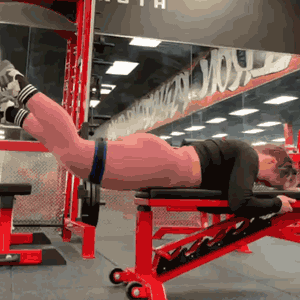 3. Machine Reverse Hyperextensions
3. Machine Reverse Hyperextensions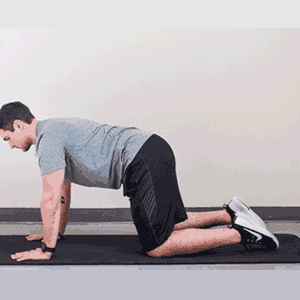 5. Bird Dogs
5. Bird Dogs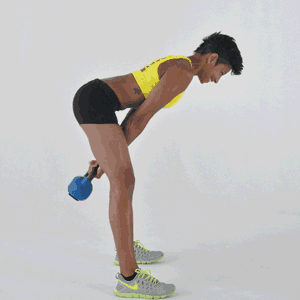 7. Kettlebell Swings
7. Kettlebell Swings

